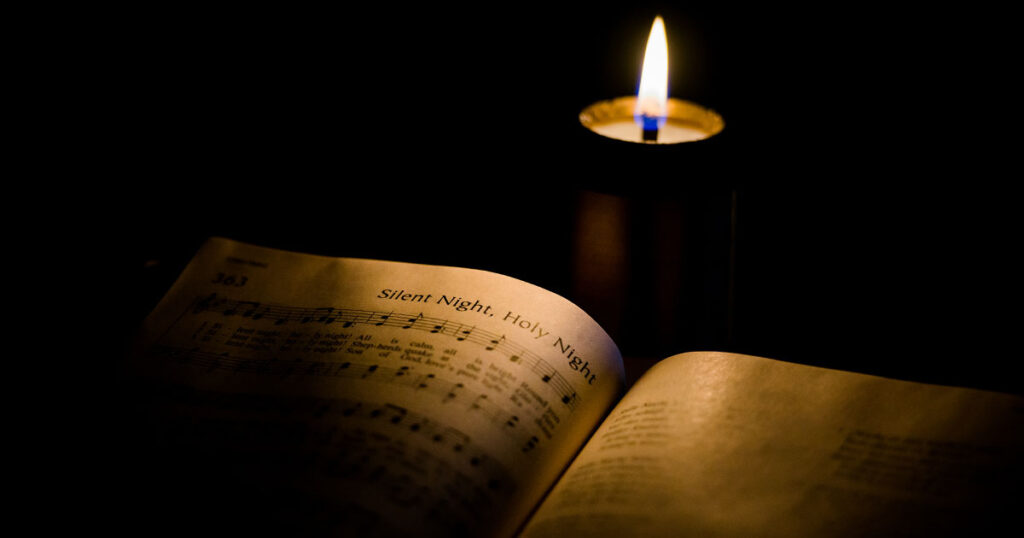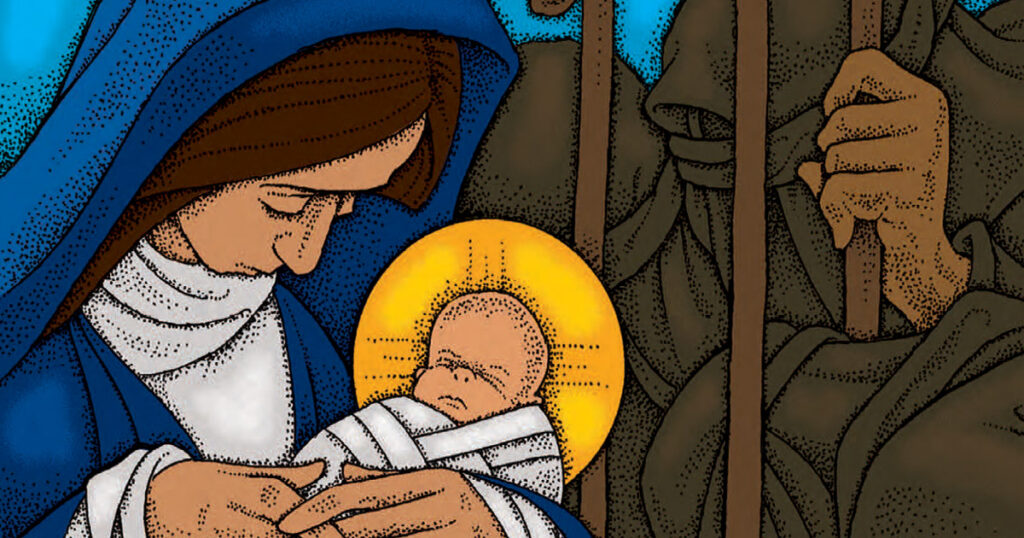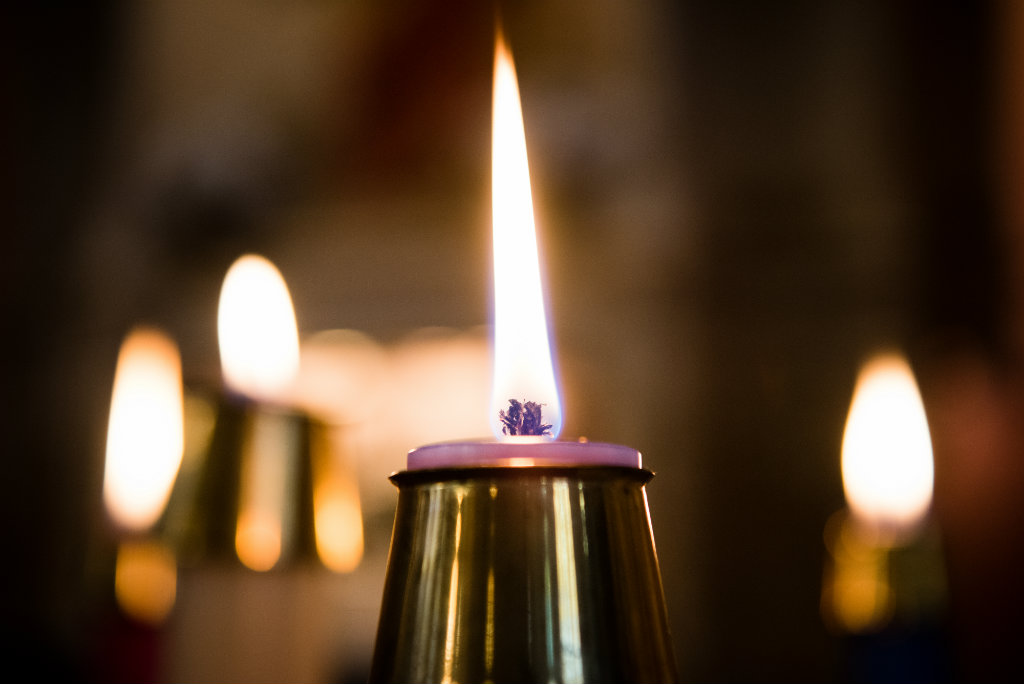Making Holidays More Special by Doing Less
In Little House on the Prairie, Laura Ingalls Wilder describes a Christmas from her childhood on the American frontier. Young Laura and her sister, Mary, go sadly to bed on Christmas Eve, knowing their family will have no Christmas presents. Yet in the morning their sadness is turned to joy.
A neighbor has risked his life to ford the swollen creek in freezing weather to bring them gifts “from Santa Clause.” In their stockings the girls receive a shiny tin cup, a stick of candy, a small cake and a penny. They are amazed at the abundance. Although the two children do not understand why the adults are “almost crying,” they do know “there had never been such a Christmas.”
American-style feasting
By modern standards, the Ingalls family possesses very little. Yet wealth is relative. Prosperity does not necessarily make one grateful. Just as often, an abundance of good things fools us into believing we deserve everything we have and just a little bit more, too. It tempts us to make gods of our lusts and desires.
No wonder, then, that mainstream culture associates the “big” American holidays like Thanksgiving and Christmas with gluttony, debt, stress and pressure. We bemoan the clutter and belly fat we already have while consuming more. Perhaps one reason we struggle with feast days is that we no longer fast.
It reminds me of a scene from Pixar’s 2004 movie “The Incredibles.” A mother tells her young son that everyone is special, and he retorts, “Which is another way of saying no one is.” The days of our year have reached a similar state. Every day is a “feast,” and we are too satiated to truly enjoy our Christmas cookies.
Christian-style fasting
In contrast, Christians have historically centered life around the seasons of the Church Year, fasting and feasting in turn. The fasts of the Church Year are not the same as going on a diet. They are not “just another thing to do,” because they are not about us. They invite us to submit our wills and appetites to a larger pattern outside of ourselves. They remind us of Jesus and His good gifts. Through them, we act out a lectionary that teaches us about our Lord’s birth, death and resurrection. These fasts are just as relevant to us today as to Christians of the past.
For the last few years my family has tried to keep the fasts of Advent and Lent. Both seasons create opportunities for memorable customs — we love our Advent wreath — but, ultimately, they are about repentance and waiting. Blessedly, they are about doing less. Instead of focusing on our own wants, we wait for Christmas. We wait for Easter. We wait for Jesus. While we wait, we fast.
Different families fast in different ways. For us, Christmas brunch is important, so during Advent we prepare simpler breakfasts. Some years we eat oatmeal every morning. Citrus fruits are out-of-season until winter, and often I wait until Christmas to buy grapefruits and cuties. I hold off on restocking the ice cream. We do not eat much dessert. We do not play Christmas music. If the children need new clothes but aren’t actually naked, I often wait to give them replacements.
We do not fast in these ways to earn brownie points with God or because we live under the law. We do it in excitement. During this time of preparation, we get ready to feast, because we know our Lord has come and will come again. Yes, Advent is a time of waiting; but it is also a time to stock the freezer with homemade lasagna. It is a time to bake huge batches of Christmas cookies — some to give away and some to freeze for later. It is a time to tuck a nice bottle of wine and some classy chocolates into the pantry.
Rhythm for rejoicing
This rhythm of fasting and feasting helps us hunger for both physical and spiritual good things. It gives us room to truly celebrate, rejoice and eat cookies. When Christmas finally comes, we find we do not need excess to recognize the day as special. Even cute new socks and grapefruit become something to relish. This is a blessing, because I love gift giving, but I also want my children to rejoice over small gifts as easily as large ones. I want us to give gifts as a reflection of Christ’s love rather than because we structure our lives around the giving and getting of new possessions.
Parents are often hesitant to pull back from the big American holiday customs. What if the children do not understand? What if they cry? What if they think mom and dad are the Grinch? In my experience, the buy-in of children to the idea of fasting depends on how parents present it.
No one, child or adult, is wooed by negativity. When parents are heavy-handed in rejecting the premature Christmas of the world because it is “bad,” children eventually rebel. However, when parents are joyfully pursuing what is good, children come along. Be confident. Be cheerful. If the children ask for candy during Lent, smile at them. Tell them, “We don’t need that candy. We are going to have a much yummier cake on Easter!”
Fortunately, the rhythms of the Church Year are good teachers, and your children will learn by experiencing them. Let the kids stay up late to attend a special, seasonal evening church service. Light Advent candles. Fill out a Lenten calendar. Learn seasonal hymns. Embrace the idea that your family is weird, out-of-step with the world and united around a common purpose. Children crave belonging, and the Church Year connects them not only to you but also to other Christians throughout time.
We modern Americans live in a prosperous time and place. Often, our prosperity makes it harder to recognize our need for God. This is one of the great temptations of our time. Yet we are not alone. God has preserved His church through periods of poverty and periods of plenty, through times of triumph and times of persecution. He is with us today. For that I am grateful.
Photo: LCMS Communications/Erik M. Lunsford




